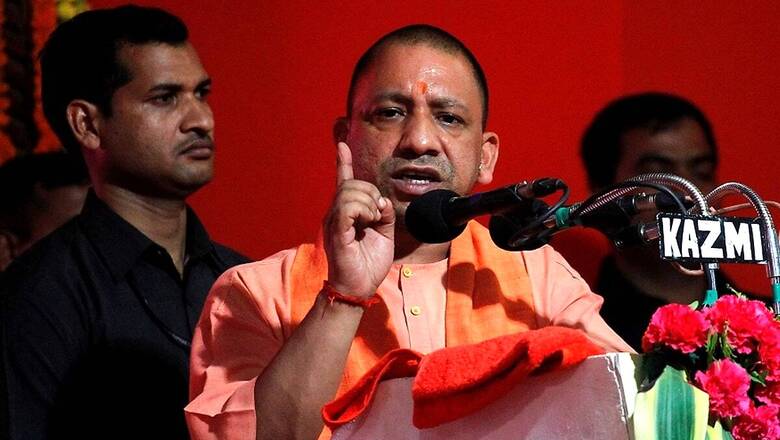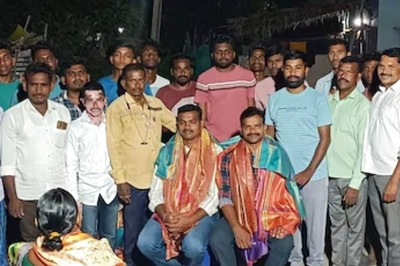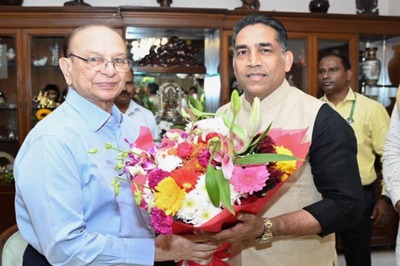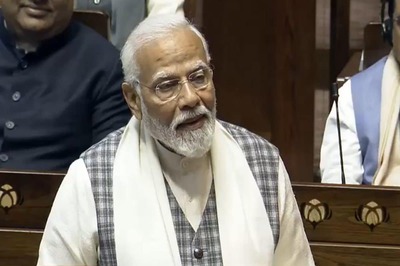
views
In another controversial statement, Uttar Pradesh Chief Minister on Saturday said that secularism is the “biggest threat to India’s tradition getting recognition on the global stage” and those “creating false propaganda about India” will face the heat.
“Secularism is the biggest threat to India’s tradition getting recognition on the global stage, and warned that those misguiding people for their own profit and betraying the country will not be spared. People who are creating false propaganda about India for a meager sum of money will face the heat,” he said.
Adityanath made the comments at the launch of the first edition of Global Encyclopedia of the Ramayana, an e-book prepared by the Ayodhya Research Institute. “The construction of the Ram Mandir in Ayodhya has made the launch of the Global Encyclopedia of Ramayana more special,” he said.
Besides, hitting out at India’s “secularism”, the Chief Minister urged people “not to lose the harmonious spirit of the nation by being involved in petty communal disputes.”
“The stories of Ramayana and Mahabharata not only give us the best life lessons, but also tell us a lot about the expansion of Indian boundaries. These stories of our epic Hindu literatures help us envision a better India. Pakistan was a part of India before 1947 and Maryada Purushottam Lord Sri Ram had extended the boundaries of India during his time by making his brother’s son, the ruler of Pakistan,” he said.
“There are still some people who raise questions on the existence of Ram in Ayodhya, but the historical facts cannot be denied,” he added.
“There are seven holy cities of Sapta Puri, which are considered as the holiest Hindu Teerths, out of these, Ayodhya, Mathura, and Kashi are within Uttar Pradesh. It is a matter of pride for us that a workshop has been organised by the Department of Culture in collaboration with the Ministry of External Affairs. It should be our endeavour to stage Ramleela all over the world,” he said.
The first edition of the Encyclopaedia was released in the English language. A month later, the first edition in Hindi and Tamil languages will be published.
The Uttar Pradesh Department of Culture, in collaboration with the Ministry of External Affairs, is involved in this mega project by combining the tangible and intangible legacy of the Ramayana from 205 countries of the world.
For this, a workshop was organised by the department which included 70 scholars from West Bengal, Assam, Kerala, Karnataka, Chhattisgarh, Tripura, Andhra Pradesh, Telangana and Delhi.
According to Shishir, Director of Culture, Uttar Pradesh, there is a plan to publish the Ramayana Encyclopaedia in 200 volumes.
For this, the Ayodhya Research Institute has set up a board of editors and advisors around the country and the world. The first edition has been designed by the Indian Institute of Technology, Kharagpur.
The publication of Ramayana will also be released in Oriya, Malayalam, Urdu and Assamese languages along with the first edition of the Global Ramayan Encyclopaedia.
Also, the oldest and authentic book about Ayodhya, ‘Ayodhya Mahatma’ will be released in the English language to expand it globally.
It was in May 2018, that the chief minister had directed to conduct a survey and publication of all the Ramayana sites of the world at the review meeting of Ayodhya Research Institute, Ayodhya.
Globally, evidence of the Ramayana’s tangible heritage, architecture, sculpture and painting is found in countries around the world including Pakistan, Iran, Iraq and Europe since about 5000 years ago.
According to the scholars, almost all countries of Europe accepted Ram as their first ancestor.
Scholars claim that ‘Ram Takht’ was received in Gandhara region in 2500 BC and many villages in Gandhar have their names on Ram and Sita.
Taxila is named after the elder son of Bharat, Taksh.
The entire Gandhara region of Pakistan is rich in Ramayana culture.
According to scholars, there is evidence of a Ramayana civilisation in Italy before the Roman civilization in Europe. Vatican City, France, Germany, Netherlands also have elements of this culture.
Read all the Latest News, Breaking News and Coronavirus News here




















Comments
0 comment